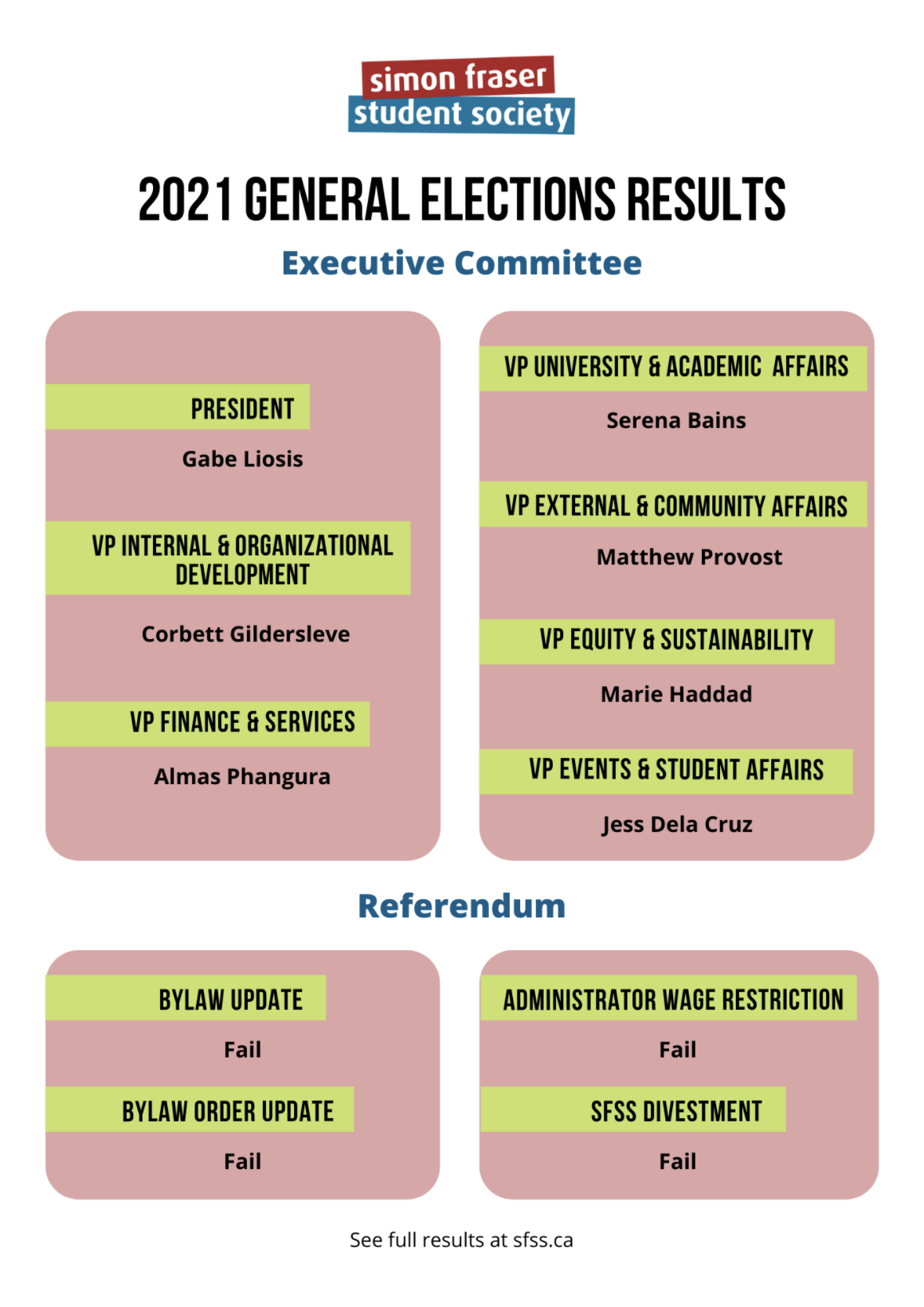
by Gurleen Aujla, Peak Associate
Another round of SFSS elections is complete, and I congratulate all of the successful candidates, but something about the results isn’t right.
The 2021 election results had an average of 891 total votes per position, with most candidates being elected with between 500 to 650 votes. With over 29,000 undergraduate students currently enrolled at SFU, it is astonishing that the highest total vote count of 953 for the president position represents a mere 3.29% of the population. The SFSS cannot advocate for and provide resources and services meant to represent the entire student body with such disproportionate percentages.
All SFSS executive positions should reach a minimum percentage of “yes” votes — 8% in proportion to the total student population — in order to be elected to the Board of Directors. A minimum voter threshold would prioritize member outreach activities to both ensure a larger voter turnout and that candidates properly connect with students, hear their concerns, and address the issues important to them. 8% would be a reasonable goal for the SFSS as it is a significant increase in engagement while still being cognizant of the reality of previous years’ voter turnout.
In the 2020 election, most VP positions were elected with 700 to 1,000 votes in favour. Even still, this is a staggeringly low proportion of the total student population. This goes to show the trend in weak voter turnout didn’t start this year, but has been a long-standing trend.
The SFSS is one of the most powerful representations of undergraduate students at SFU. They make decisions about students on a regular basis concerning academic, financial, social, and health-related matters. In fact, as of last spring, the SFSS was managing more than $4.3 million in their general fund alone. This fiscal responsibility must be rooted in oversight measures, student trust in the union, and transparency to the student body. This cannot effectively be achieved without a minimum percentage of students casting their votes for the representatives directly involved in this financial management.
The Independent Electoral Commission (IEC) is tasked with coordinating and running student election engagement initiatives to increase voter turnout — on top of running the election itself. However, the SFSS Elections and Referenda Policies state they are to plan classroom visits, student union meeting visits, club meeting visits, and other such activities “if possible.” This loophole is contradictory to its purpose. The IEC ensures that each candidate’s platform is broadcasted to the student body in a number of ways to make it easier for voters to make informed decisions. The phrase “if possible” negates this purpose, has no place in the written standards for how elections are conducted, and should be amended to aid in increasing the total percentage of voters.
Additionally, all four of the referendum questions on this year’s ballot required a quorum of a two-thirds majority for passing. If we can have a threshold for the referendum questions, why not for the executive team? While reaching an 8% minimum turnout may not be possible, and new rules would have to be created to deal with that possibility, there should still at least be an attempt to obtain greater engagement from the student body.
While the pandemic made facilitating this year’s election more challenging, the general trend of weak voter turnout still needs to be fixed. Our elections should be principled on the fair and accurate representation of student views and should be mirrored by the written election rules and procedures. It’s time for the SFSS elections to implement a minimum voter threshold of 8% of the student population to achieve this.

[…] students to advocate.” Among lack of social advocacy, SFU students exhibit extremely low election turnout rates for SFSS leadership […]